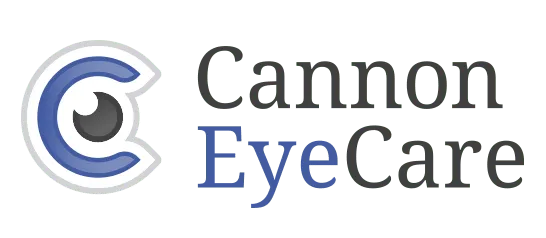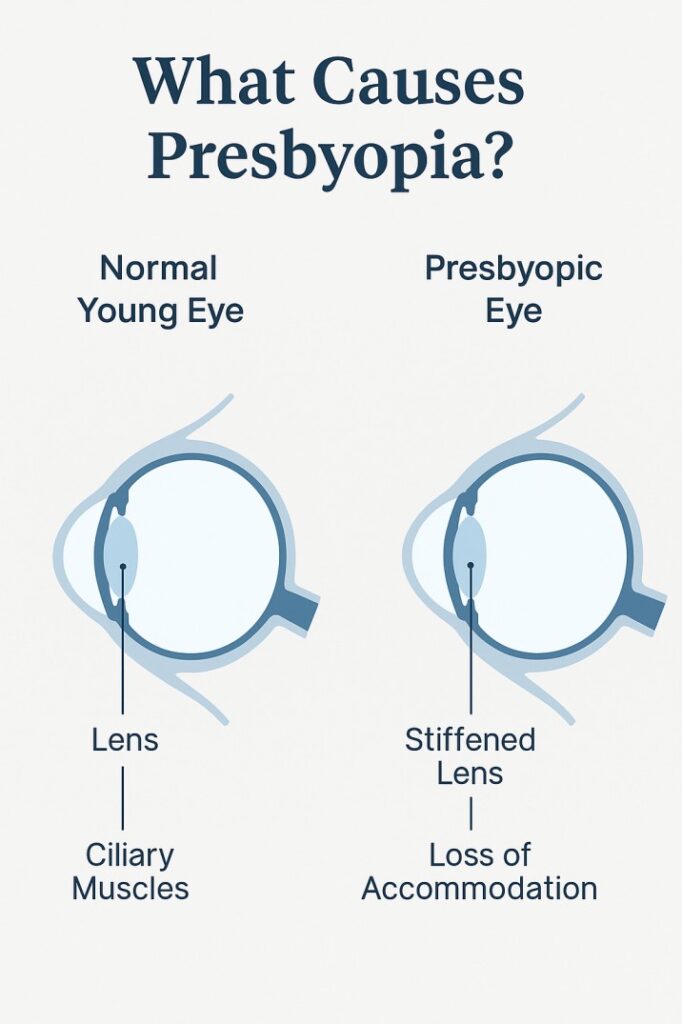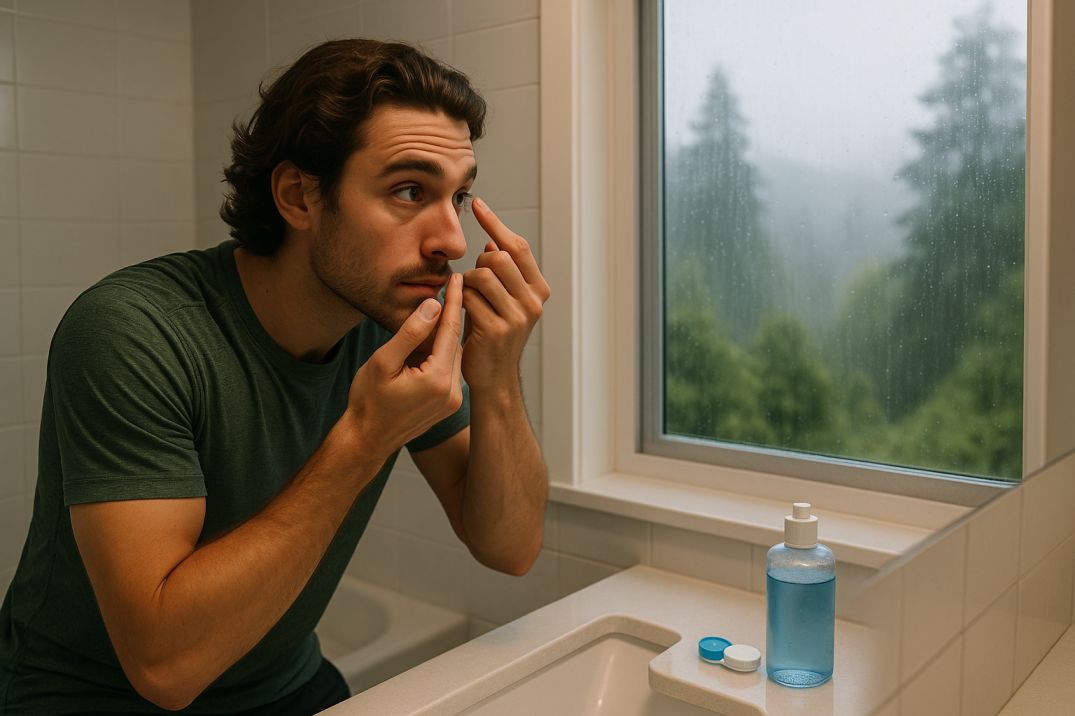Presbyopia Explained: Clear Vision After 40 in Seattle
Key Takeaways: Understanding and Treating Presbyopia in Seattle (2025)
-
Presbyopia is universal and inevitable — nearly all adults over 45 experience it due to age-related lens stiffening and weakened eye muscles.
-
Screen-heavy lifestyles accelerate symptoms, especially in tech-focused cities like Seattle, where digital eye strain is common.
-
Early signs include blurry near vision, eye fatigue, and holding reading materials at arm’s length. Schedule an exam at the first symptoms.
-
Don’t confuse presbyopia with hyperopia (farsightedness) — accurate diagnosis ensures effective, personalized treatment.
-
Tailored treatments abound in 2025, from progressive glasses and blue-light filters to multifocal contacts, on-demand eye drops, and quick outpatient procedures.
-
Lifestyle matters: Cannon EyeCare customizes care for hikers, coders, sailors, and more—balancing screen time with adventure-ready solutions.
-
Innovations are already here: Next-gen eye drops, AI-powered lens fitting, laser scleral therapy, and 3D-printed Seattle-made lenses offer cutting-edge clarity.
-
Addressing presbyopia boosts more than vision — it improves confidence, productivity, and enjoyment of daily life.
-
Seattle leads in vision tech: From clinical trials to digital eye mapping, local resources make advanced care accessible and personalized.
-
Empowerment is the goal: Cannon EyeCare’s workshops, tech tips, and smart tools help you thrive with clarity—on screen and off.
What Causes Presbyopia? The Science Explained
Presbyopia (meaning “old eye” in Greek) occurs when the natural lens of your eye stiffens with age, losing its flexibility. This reduces its ability to focus clearly on close-up objects, such as books or phones.
Who Gets Presbyopia?
Most people in Seattle notice symptoms between the ages of 40 and 45. Genetics and health factors can cause earlier or later onset.
Why Does Age Affect Focus?
Two key changes happen:
-
Lens Hardening: The eye’s lens gradually loses elasticity.
-
Weakened Muscles: Ciliary muscles (which control lens shape) become less effective.
Important Note: Presbyopia isn’t a disease – it’s a natural part of aging, even for people with healthy eyes.
Seattle-Specific Insight:
Frequent screen use (common in tech-focused Seattle) can make symptoms appear sooner or feel more pronounced, as digital devices demand sustained near vision.
Early Signs of Presbyopia: Recognizing Symptoms
Presbyopia often begins subtly. Watch for these common changes:
-
Blurry Near Vision: Struggling to read small text on phones, restaurant menus, or product labels.
-
Arm’s Length Reading: Holding books, tablets, or documents farther away to see clearly.
-
Eye Fatigue: Headaches, strained eyes, or tiredness after computer work or reading.
-
Light Dependence: Needing brighter light for tasks like cooking or crafts.
Seattle-Specific Challenges:
In our tech-driven city, office workers often notice symptoms first during screen use. Outdoor enthusiasts also report issues with close-focus tasks like reading trail maps, fishing knot guides, or boat gauges.
When Should You See a Seattle Eye Doctor?
Schedule a comprehensive eye exam at the first sign of symptoms. Early diagnosis by a local optometrist ensures timely solutions for clearer vision and greater comfort during daily activities.
Presbyopia Prevalence: A Universal Reality
Affecting over 2 billion people globally, presbyopia is an unavoidable age-related condition. By age 45–50, nearly 100% of adults experience symptoms.
Why Seattle Residents Seek Care Sooner:
With Seattle’s concentration of tech professionals and an aging workforce, presbyopia drives more new patient visits to clinics like Cannon EyeCare than almost any other vision concern.
What Influences Earlier Onset?
While age guarantees presbyopia, these factors accelerate it:
-
Genetics: Family history may cause symptoms before 40.
-
Health Conditions: Diabetes or heart disease.
-
Lifestyle: Extended screen time (common in Seattle jobs) and chronic UV exposure.
Key Research Insight:
A 2024 JAMA Ophthalmology study confirmed that many professionals delay vision correction, which can worsen productivity and lead to eye strain—a critical issue for Seattle’s performance-driven workforce.
Presbyopia vs. Farsightedness: Don’t Confuse Them!
While both cause near-vision challenges, presbyopia and hyperopia (farsightedness) differ fundamentally:
Presbyopia (Age-Related Focus Loss)
-
Onset: Symptoms appear after age 40
-
Cause: Natural lens stiffening
-
Distance Vision: Typically unaffected until later stages
-
Near Vision: Worsens progressively (e.g., struggling with phone texts)
Hyperopia (Farsightedness)
-
Onset: Often present from birth
-
Cause: Physically shorter eyeball shape
-
Distance Vision: May be blurry even in youth
-
Near Vision: Consistently difficult at all ages
Why Seattle Patients Need Precise Diagnosis:
Mistaking one for the other leads to ineffective solutions. At Cannon EyeCare, our comprehensive exams:
-
Use advanced imaging to measure your eye’s unique structure.
-
Distinguish age-related lens changes from genetic hyperopia.
-
Prescribe tailored corrections—whether reading glasses, progressives, or specialty contacts.
2025 Presbyopia Treatments: Personalized Solutions for Seattle Lifestyles
At Cannon EyeCare, we customize every solution to your vision needs, hobbies, and Seattle lifestyle. Here are today’s top options:
1. Eyeglasses: From Reading to Progressives
-
Simple Readers: Affordable “cheaters” for occasional near tasks.
-
Prescription Progressives: Seamless vision from screens to scenery—ideal for:
-
Tech workers shifting between monitors
-
Hikers needing clear trail maps and mountain views
-
-
Blue-Light Filters: Essential for Seattle office professionals (reduces digital eye strain).
2. Contact Lenses: Freedom for Active Lifestyles
-
Multifocal Contacts: Crisp vision at all distances for kayaking or concerts.
-
Monovision: One eye corrected for near, one for far (popular with golfers).
Note: Requires adaptation—our optometrists trial-fit lenses first.
3. Surgery: Long-Term Vision Freedom
-
Laser Scleral Therapy: 15-minute procedure (per eye), reducing glasses dependence.
-
Lens Replacement: Multifocal IOLs during cataract surgery for lifelong clarity.
-
Corneal Inlays: Low-impact option for early presbyopia (e.g., artists needing detailed vision).
2025 APAO research shows 92% patient satisfaction with modern techniques.
4. Presbyopia Eye Drops: On-Demand Clarity
-
Pilocarpine Drops (e.g., VUITY®): FDA-approved, works in 15 minutes. Perfect for:
-
Evening events at Pike Place Market
-
Reading ferry schedules or restaurant menus
Mechanism: Temporarily sharpens focus by adjusting pupil size.
-
How to Choose? Let Cannon EyeCare Guide You
During your Seattle eye exam, we evaluate:
- Daily Habits: Screen time vs. outdoor activities
- Hobbies: Sailing, coding, gardening, or skiing
- Health History: Diabetes, dry eyes, or medications
- Vision Goals: I want to read boat gauges without glasses
Presbyopia’s Real-Life Impact: Thriving in Seattle
Adapting to presbyopia isn’t just about vision—it’s emotional. Many feel frustrated with new limitations, especially in our fast-paced city, where screens and outdoor adventures demand visual flexibility.
Why Seattleites Feel the Shift More Sharply
-
Tech Work: Eye strain from coding or design deadlines amplifies symptoms.
-
Outdoor Hobbies: Difficulty reading trail apps or sailboat gauges disrupts adventures.
-
Social Settings: Struggling with dimly lit restaurant menus at Pike Place.
The Emotional Win: Reclaim Your Confidence
Johns Hopkins’ research confirms: Patients who address presbyopia proactively report:
- 27% higher productivity at work
- Renewed joy in hobbies (gardening, photography)
- Stronger self-esteem in social situations
Your Seattle Action Plan
-
Reframe Your Mindset:
“Your eyes have served you for decades—presbyopia is a milestone, not an end.” -
Join Local Support:
Cannon EyeCare’s monthly “Vision Independence” workshops (Seattle/Bellevue locations). -
Tech Hacks:
-
Enable Text Magnification on phones
-
Use Audible Trail Guides for hikes
-
Install anti-glare screen protectors
-
-
Style Meets Function:
Modern progressives or contacts let you kayak, code, or dine out without compromise.
2025-2030 Presbyopia Innovations: Seattle’s Cutting-Edge Advantage
As a global tech leader, Seattle drives revolutionary eye care advancements. Cannon EyeCare integrates these breakthroughs for our patients:
Emerging Solutions Available Now
-
Next-Gen Eye Drops
-
Pilocarpine (VUITY®) & BRIMOCHOL™: FDA-approved drops for temporary near-vision boost
-
Seattle Access: Local clinical trials for next-wave agents (e.g., UNR844 chloride ion channel modulators)
-
-
Non-Surgical Laser Therapy
-
Laser Scleral Treatment: 15-minute procedure enhancing natural focus – ideal for active hikers/cyclists
-
2026 Outlook: UW Medicine studies show 40% reduced glasses dependency
-
-
AI-Powered Precision
-
Prescription algorithms optimizing progressives for screen-to-nature transitions
-
Surgical planning tech ensuring perfect IOL calculations
-
The Personalized Vision Revolution
-
Digital Eye Mapping: Topography-guided lenses customized for your unique cornea
-
Seattle’s 3D-Printed Lenses: Local startups creating bespoke optics for tech workers
Patient Experience Upgrades
Cannon EyeCare’s tech-forward approach includes:
- SGE-Optimized Education: Instant answers via our AI knowledge hub
- Smart Scheduling: Book Bellevue/Kirkland appointments via voice command
- Symptom Chatbots: Pre-visit triage for faster solutions
Stay Informed Through Seattle’s Resources:
-
UW Medicine Eye Institute (local trials)
-
NIH Vision Research Updates
-
Cannon EyeCare’s Innovation Blog
Presbyopia may be a natural part of aging, but blurry near vision doesn’t have to slow you down—especially in a fast-moving city like Seattle. With today’s advanced treatments and personalized care, you can reclaim visual clarity and confidently enjoy everything from coding marathons to mountain hikes.
Ready to see again?
Schedule your comprehensive eye exam with Cannon EyeCare today and explore cutting-edge solutions tailored to your lifestyle.
Book online or call now to take the first step toward sharper vision.
FAQs
-
Presbyopia is an age-related loss of near vision focus, usually starting around age 40




